Overview of gadgets with alternative charging
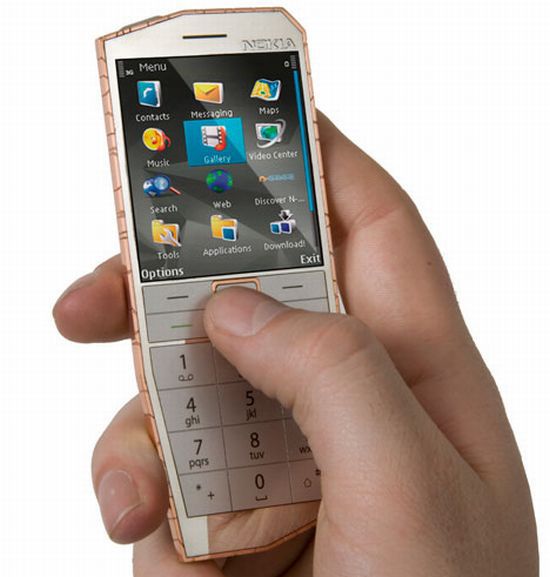
Today I read the news about the "eternal" phone called Viro . This phone will be presented on October 1, 2014 . The creators promise continuous operation without recharging from the network. I decided to share with you interesting technologies of alternative energy generation from the surrounding space.
The picture above shows the Nokia E-Cu . This phone did not even have a connector for a network adapter. E-Cu has a heat generator capable of generating enough energy from the heat of our hands. He was supposed to go on sale in 2011-2012 . But alas ...
')
In the article I will try to talk a little about the achievements in this area and give examples of operating devices.
Now the market began to appear phones with E-INK screens. This technology allows you to significantly save the charge of the gadget due to energy consumption only at the time of updating the image. Now available on the market: ONYX PHONE E45 BARCELONA with one monochrome E-INK display and Yota YotaPhone with two displays E-INK and LCD . Before the end of the year should be Yota YotaPhone 2 .
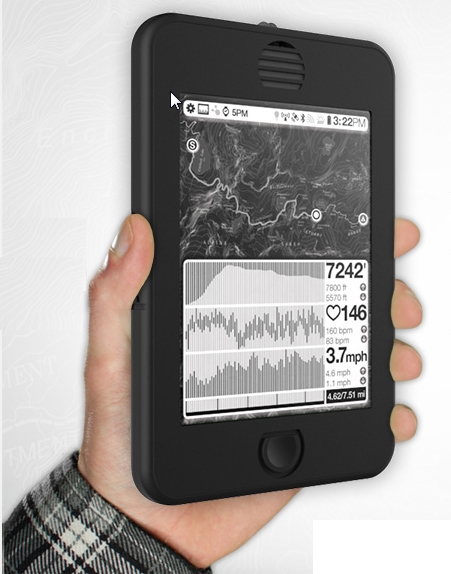
These devices, although they increase the time of autonomous use, but they are still dependent on charging. And here solar panels come to the rescue. There is a very interesting device called Meet Earl or simply Earl . This device is a tablet with a highly efficient solar battery. What gives him the opportunity to work without recharging from the network. The device itself is very interesting.
Judge for yourself by the characteristics:
Android 4.4 • Flexible 6 "E-ink screen (1024x758) • Sunlight viewable touch screen • Waterproof shell (waterproof) • Solar charging (Solar panel) • i.MX 6 DualLite 1GHz Cortex A9 • 1GB ram • 16GB memory + microSD • Wifi b / g / n • BT 4.0 • ANT + • NFC (yes, yes contactless payments) • VHF / UHF transceiver (GMRS, PMR446, UHFCB) (the ability to work as a receiver and transmitter to communicate with people over the radio , like a normal walkie-talkie or just broadcast over the radio) • GPS + GLONASS • Accelerometer • Gyroscope • Magnetometer • Temperature • Barometer • Humidity • AM / FM / SW / LW / WB (all radio stations) • 20+ hour battery (on one charging) • 3.5mm TRRS headphone / microphone jack • Micro USB • Milita ry grade secure lanyard (military grade protects it from being killed) • 400 grams (14.1 oz) • 178mm x 125mm x 15mm
This device should have been released this summer. But the certification process was delayed. In return, the creators have improved the characteristics of the device, updated the software. True, it will have to wait until the summer of 2015.
From the phones with the solar battery you can still find the Sagem Puma :
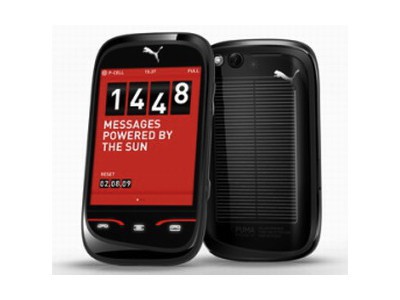
If you really try you can find the Samsung E1107 :
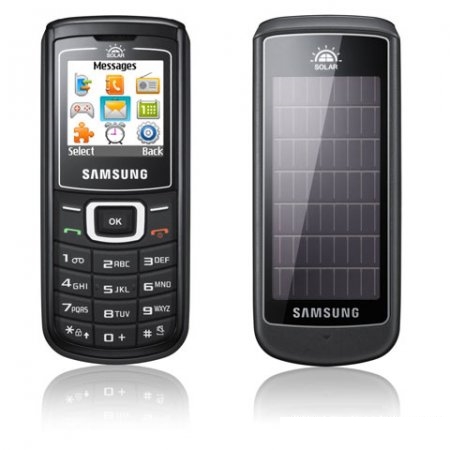
There is a prettier LG GD510 Sun Edition :
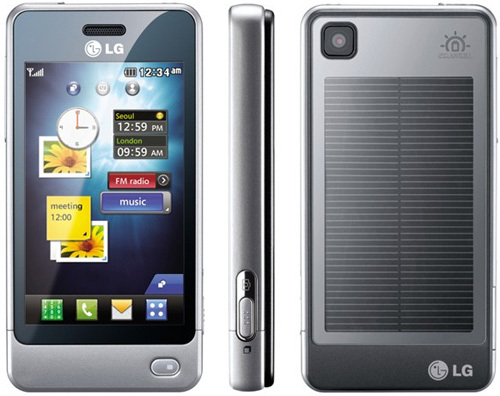
More efficient solar panel technology is based on a photovoltaic surface embedded directly in displays:
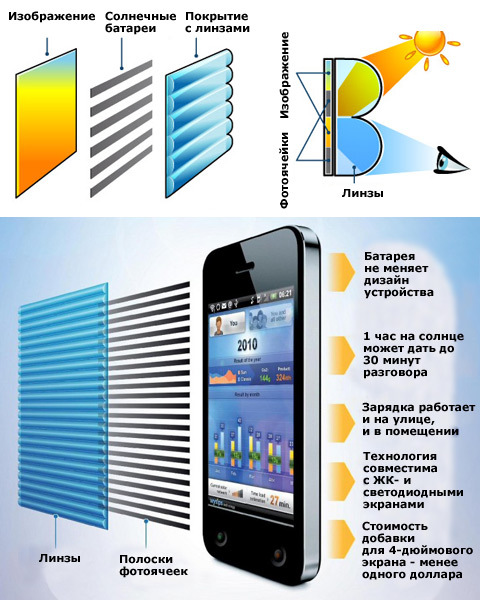
This is what the developers of one type of this technology called WYSIPS write about :
“The secret of WYSIPS lies in invisible lenticular semicircular lenses, which divide the light falling on the screen and the light emanating from the screen into two streams separated by a certain angle.
If a very thin strips of photovoltaic batteries are placed on top of the screen, they will not prevent the viewer from observing the image. At the same time, the light falling from above will deflect precisely to these bands.
The efficiency of thin photocells used in the prototype is only 10% . Wired said: "A phone screen with WYSIPS produces a quarter-watt power in bright light."
This is not enough to completely abandon the network charging of the phone or PDA. Is that in sleep mode, such a phone can fully charge only from its photo panel, hours in six.
- The developers of Apple and Yota are considering options for implementing these panels in their devices. Apple filed for registration with the relevant patents. And in Yota was a message about the consideration of this technology for use in their devices. Perhaps in the near future we will see from them any gadgets.
One of these phones with charging through the screen has already been released, but the Tag Heuer Meridiist Infinite is very expensive:

The clock has long been used method of charging the phone through the solar battery in the dial. The data itself does not have hours, but they write that they charge in the sun in a matter of minutes. On the picture Casio AD-S800WH-4A watch there are others :

In the header of the post was a message about the Nokia E-Cu phone, which is able to convert the heat of our body into electricity. For this you need to hold the phone in bare hands. In winter, it is not practical and freezing, to recharge the phone does not make sense. But this technology is very well applicable to watches and there are already such watches on the market. For example, Citizen BQ0000-56E There are other ways to charge ordinary watches that are not yet applicable for mobile electronics: kinetic and spring self-winding mechanism. In either case, the energy of motion-oscillation is converted into electricity.
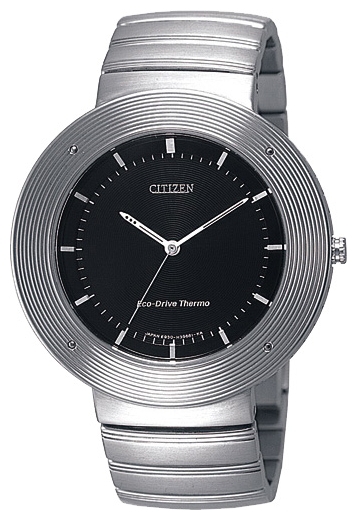
Everything is good, but for a smart watch this charge is not enough. A special tape was developed at the Korean Institute for converting heat into electricity that can recharge a smart watch or other mobile electronics. This tape can be embedded in the strap:
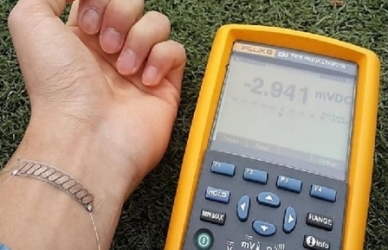
However, as in the quote: "It does not matter how much you earn, most importantly, how much you spend." You can charge the device and so that it is not annoying. For example, once a year ... The above Casio STB-1000 smart watches can notify you of incoming calls and SMS, while working from one battery to two years.

Dear Habrovchane, I would like to learn more about interesting gadzhetak on this topic. Please share in the comments.
Source: https://habr.com/ru/post/238525/
All Articles